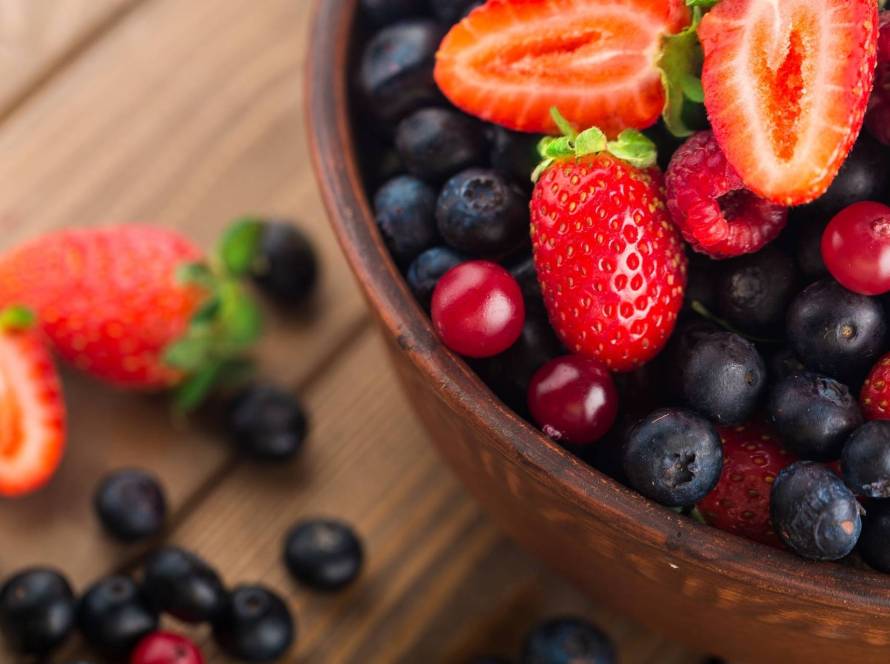GLP-1 (glucagon-like peptide-1) is a hormone produced in the gut that plays a key role in regulating blood sugar, appetite and even inflammation. While some people take GLP-1 receptor agonists as medication, research shows we can also boost GLP-1 levels naturally.
Let’s explore how to increase GLP-1 naturally, from diet to exercise to gut health, small choices may help the body produce more of this hormone, supporting metabolic health and possibly even promoting longevity.
What is GLP-1 and why it matters
Before we dive into how to increase GLP-1, it’s helpful to understand what it does and why it plays such a central role in metabolism and appetite regulation. Produced by L-cells in the small intestine, GLP-1 is part of a family of hormones known as incretins. These are released in response to food intake and help manage post-meal blood glucose levels.
The role of GLP-1 in metabolism
GLP-1 is secreted by intestinal cells in response to food intake. It stimulates insulin secretion, slows gastric emptying and reduces appetite. This makes it an important player in glucose control and weight regulation.
GLP-1 and chronic disease prevention
Low GLP-1 activity has been linked to obesity, insulin resistance and type 2 diabetes. On the other hand, enhanced GLP-1 signaling improves glucose control, supports healthy weight management and may lower inflammation. These benefits suggest that supporting GLP-1 naturally could play a role in disease prevention and healthy aging.
Dietary strategies to increase GLP-1
Certain foods and nutrients have been shown to stimulate GLP-1 secretion or improve its activity. A diet rich in whole, minimally processed ingredients tends to support both gut health and hormone balance, two key elements in natural GLP-1 regulation.
High-fiber foods
Fiber slows digestion and provides nourishment for the gut bacteria that indirectly influence GLP-1 production. Soluble fibers, such as those found in oats, beans, apples and flaxseeds, are especially effective in promoting satiety and triggering gut hormone release.
Healthy fats
Monounsaturated and polyunsaturated fats found in foods like olive oil, nuts and fatty fish help stimulate GLP-1 release and delay gastric emptying. They also reduce post-meal glucose spikes, supporting overall metabolic health.
Fermented foods and probiotics
Probiotic-rich foods like yogurt, kefir, kimchi and sauerkraut help maintain a healthy gut microbiota. Certain bacteria in the colon produce short-chain fatty acids (SCFAs) when they ferment fiber and these SCFAs are known to stimulate GLP-1 secretion.
Polyphenol-rich plants
Fruits and vegetables rich in polyphenols, like berries, cocoa, green tea and red onions, have been shown to activate L-cells and increase GLP-1 release. These compounds also protect the intestinal lining and reduce inflammation.
Lifestyle habits that support GLP-1
In addition to diet, our daily habits shape how efficiently our body produces and responds to GLP-1. Movement, stress and sleep patterns all influence hormone regulation, including incretin hormones.
Intermittent fasting and meal spacing
Intermittent fasting and longer periods between meals may help reset hormone rhythms and increase GLP-1 receptor sensitivity. Allowing time between meals also reduces chronic insulin spikes and improves metabolic flexibility.
Regular physical activity
Exercise improves insulin sensitivity and may stimulate GLP-1 secretion. Both aerobic workouts and resistance training have shown benefits. In some studies, moderate exercise increased post-meal GLP-1 levels and appetite control.
Quality sleep and stress reduction
Chronic sleep deprivation lowers GLP-1 levels and disrupts glucose metabolism. Stress has a similar effect. Deep sleep and relaxation practices like yoga or meditation can reduce cortisol, support gut-brain signaling and promote balanced GLP-1 production.
Supporting the gut environment
The intestinal microbiome is one of the most powerful regulators of GLP-1. The bacteria living in the colon interact with fiber, produce signaling molecules and even influence the health of L-cells that secrete GLP-1.
Gut microbiome and GLP-1
Certain bacteria, especially those that produce butyrate and other SCFAs, enhance GLP-1 release. A diverse microbiome built on fermented foods, fiber and low-sugar intake supports this process and contributes to better overall metabolic health.
Prebiotics and GLP-1 production
Prebiotics are types of fiber that feed beneficial bacteria. Foods like garlic, leeks, artichokes and green bananas contain prebiotic compounds that help increase SCFA production and, in turn, GLP-1 output.
GLP-1 is more than a target for diabetes and obesity medications, it’s a hormone we can influence with daily choices. Diets rich in fiber, healthy fats and polyphenols, combined with regular movement, sufficient sleep and a well-fed microbiome, offer a sustainable way to boost GLP-1 naturally.
While medications offer targeted benefits, natural strategies support not only GLP-1 but a broader range of metabolic and hormonal health. By focusing on gut-friendly foods and lifestyle habits, we can create internal conditions that favor balanced appetite, better glucose control and long-term health.

